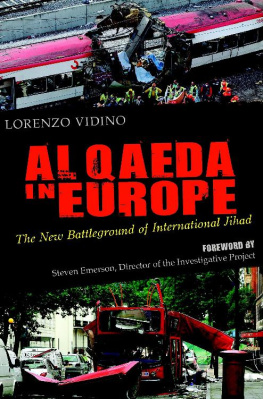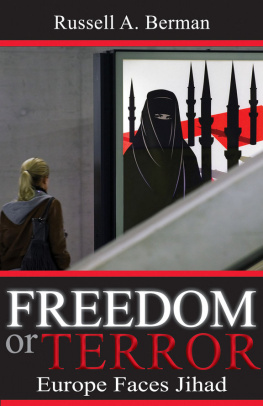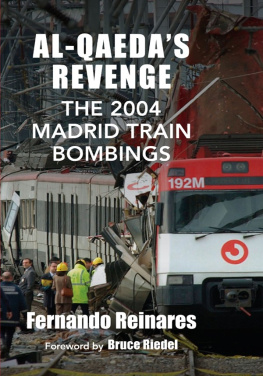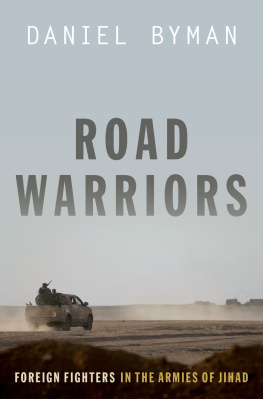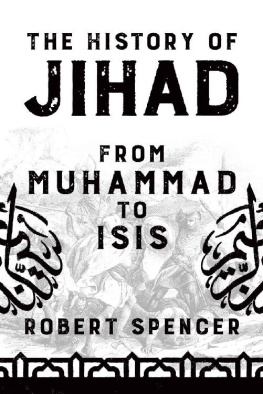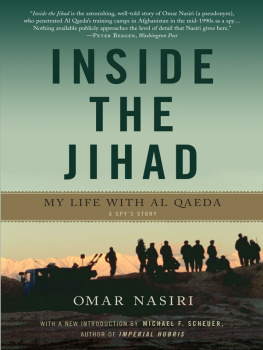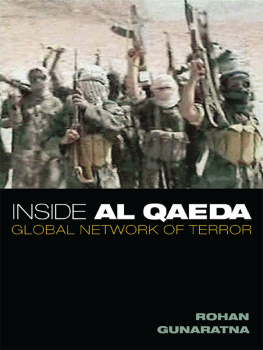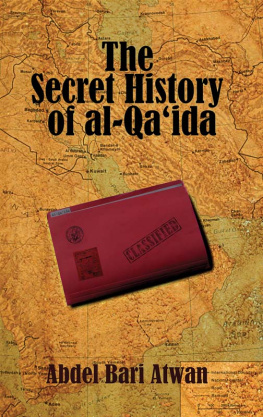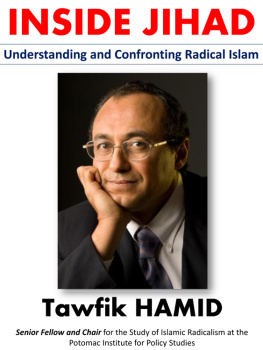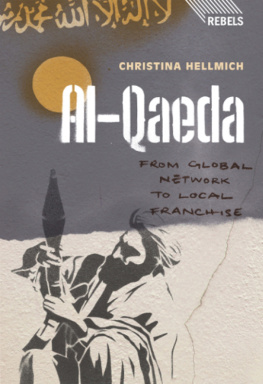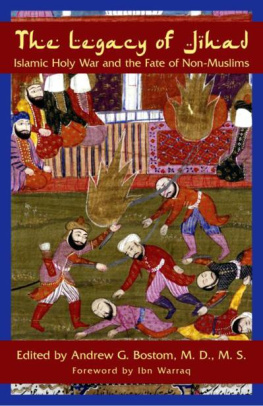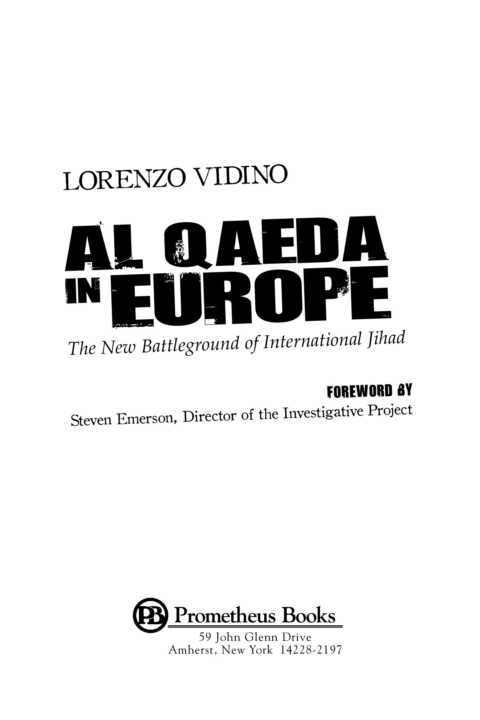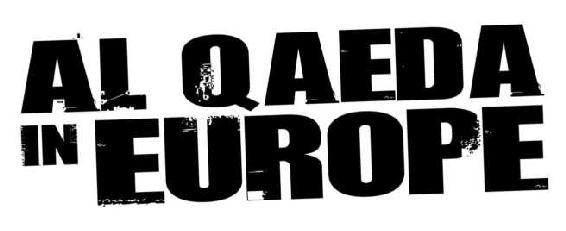




TO MY PARENTS AND TO JESSICA,
FORTH EIR LOVE AND SUPPORT
CONTENTS
PART I: A DAGGER IN THE SOFT HEART
Chapter 1:
Chapter 2:
Chapter 3:
PART II: THE ALGERIAN NETWORK
Chapter 4:
Chapter 5:
Chapter 6:
Chapter 7:
PART III: AL QAEDA'S MAIN STATION HOUSE IN EUROPE AND THE IRAQI JIHAD
Chapter 8:
Chapter 9:
Chapter 10:
PART IV: MADRID, VAN GOGH, AND THE NEW FACE OF AL QAEDA
Chapter 11:
Chapter 12:
APPENDIX: ISLAMIC EXTREMISM IN EUROPE
ACKNOWLEDGMENTS
I am gratefully indebted to many people who, over the last few years, have helped me research and understand terror networks operating in Europe. First and foremost, I am especially thankful to Steven Emerson, without whose support, advice, and patience this book would not have come to light. I have had the fortune of working for Steve for more than three years, and the passion with which he runs the Investigative Project is a continuous source of inspiration. The current and past staff members of the Investigative Project represent a unique group whose dedication and hard work reflect Steve's commitment. Among them, I would like to express my most sincere appreciation to Josh Lefkowitz, Tamar Tesler, Kim Beck, Jason Mintz, and Cynthia Dachowitz.
I am also grateful to Alive Falk, Guido Olimpio, Emerson Vermaat, Antonio Oppi, Muriel Nellis, and everybody at Literary & Creative Artists. Michael Wildes deserves a separate mention for his support and dedication to national security.
Finally, I owe a special measure of gratitude to two good friends with whom I have the privilege of sharing passions and interests: Andrea Morigi and Evan Kohlmann.
FOREWORD
Rallies calling for jihad. Fatwas calling for killing Americans and Jews. Islamic organizations condemning democracy and the West. Islamic clerics demonizing the United States and Europe. Terrorist leaders operating freely and planning operations. Fund-raising for terrorist groups. "Enemies of Islam" targeted for assassination. Hundreds of innocent civilians marked for death. Young Muslims volunteering and training for jihad.
No, this is not the Middle East. It is far closer to home, and it has been going on for years in London, Paris, Madrid, Milan, Rome, Bonn, Strasbourg, Amsterdam, Oslo, Copenhagen-throughout the European continent. The jihad battlefront is everywhere nowadays, present throughout the capitals of Europe. The war that Europe has so assiduously tried to avoid since being ravaged in World War II is now suddenly at its doorstep.
For more than a dozen years, the jihad has been simmering throughout Europe, with regimes studiously unwilling to pay attention to, let alone clamp down on, the Islamic terrorists organizing on European soil. Even the horrific attacks of 9/11 in the United States-pivotally organized from the sanctuary of Europe by the free-wheeling lieutenants of Osama bin Laden-did not jar Europe out of its slumber. Only when the streets of Europe began running red with the blood of its citizens-with the brutal execution of filmmaker Theo Van Gogh, the murder of 197 Spanish train travelers, and the killing of fifty-two British citizens-did European leaders and governments begin to address the jihad problem on their own turf.
But is it too late? Is Europe doomed to become Eurabia? Has the concentration of radical Muslims reached levels that cannot be rolled back? Has Europe essentially ceded sovereignty over its increasingly radical Islamic populations to extremist organizations that have successfully implanted themselves? Is Europe destined to become the target of even more lethal attacks? And will Europe continue to serve as a staging ground for American targets in the Middle East or, worse yet, on American soil? And if radical Islamic populations dominating European cities is the future, is the United States facing the same course of disaster?
Lorenzo Vidino exposes the jihad network on European soil in frightening and meticulous detail, revealing the organizational networks, terrorist plots, and radical infrastructure operating for years throughout the European continent. As one of the senior investigators and researchers at the Investigative Project on Terrorism, Vidino, in the span of only a few short years, earned a reputation at the highest levels of the US government as perhaps the top expert on al Qaeda and radical Muslim cells in Europe. He has an unparalleled ability to take massive amounts of information-tens of thousands of documents, Muslim Web sites, court records, and interviews-and distill them into a brilliant narrative that tells a gripping story. This book is the cumulative result of years of research and investigation, much of it never publicly revealed, into the extremist networks in Europe.
For those who want to know more than what the headlines or thirtysecond sound bites reveal-for anyone concerned about the future of Europe and the United States-this book must be read. It will teach you; it will frighten you; it will mobilize you; it will anger you; it will educate you more than anything you have ever read on how the Muslim radicals have been transformed from "foreign" to "domestic" cells within Europe. With the rapid growth of radical Muslim populations, and with young Muslims having been subject to a steady diet of anti-Western invectives and calls for jihad, the only question is, Why didn't the attacks in London or Madrid happen sooner?
Detailing the jihad's diabolical consequences, Lorenzo reveals how the terrorists in Europe have exploited the very freedoms that made Europe so alluring. But now, with ticking time bombs ready to go off every day, there is not a wide range of options left to European governments. How did Europe find itself in this mess today?
Lorenzo's book traces the rise and growth of radical Islamists in Europe and explains how they operated with virtual impunity for years. In some respects, European governments legitimized the radical networks and leaders by granting Islamic radicals fleeing the Middle East political asylum, by officially recognizing their newly implanted mosques and militant organizations as "mainstream," and by allowing fund-raising for Islamic terrorist groups without any interruption or restrictions. Adding to that combustible mix a radicalized Islamic environment-through schools, mosques, imams, electronic broadcasts, textbooks, videos, and the Internet-in which the West, Americans, and Jews were portrayed as the "enemy of Islam," it is not difficult to see why second generations of Muslims in Europe, who had all the economic opportunities available to them as other generations, would turn to violence.
From terrorist cells in Stockholm to recruiting stations in Milan, from ricin plots in France to train bombings in London and Madrid, Lorenzo's book tells a story that comprehensively reveals the extent of the terror network that operates worldwide-but is ironically stationed from the safety of Europe.

